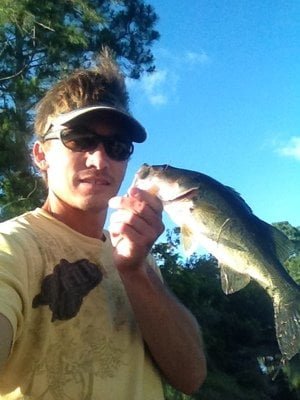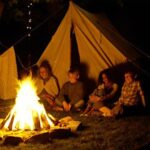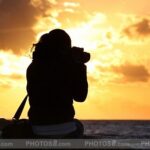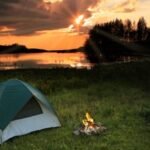Just in time for the Labor Day weekend, we bring you an interview from the beautiful coast of Florida. Russ Chiodo, founder of Coquina Coast Outdoors, is a self-described “passionate, lifelong angler and outdoorsman who lives in Palm Coast, Florida. For Flordians and visitors along the seventy mile stretch of land he calls the Coquina Coast, Russ’s blog is an incredible wealth of outdoor information.
Whether your activity of choice is fishing, hunting, or camping, Russ shows why Florida is the perfect destination. It may be too late to plan your final beach getaway before summer’s Labor Day end, but you will definitely be inspired to get outside this weekend.
Russ, tell me a bit about yourself and what you do for Coquina Coast Outdoors?
I worked as a marine mammal trainer after high school for seven years, one year of which was in California, but the rest was at facilities in Florida including Dolphin Research Center, Sea World and Marineland. I hold an English degree from Flagler College and currently work as a freelance copywriter. I’m also logging my hours and studying for my captain’s exam.
I started Coquina Coast Outdoors as a blog chronicling the fishing and hunting lifestyle in Northeast Florida. We have amazing outdoor resources here, but not much of a spotlight on our area between Jacksonville and Daytona Beach in publications or online fishing reports. I intend to present Coquina Coast Outdoors as an online magazine covering hunting and fishing along the coast in Flagler and St. Johns Counties, primarily. I bring to the blog my personal voice as conservationist in the Teddy Roosevelt sense.
What is the Coquina Coast?
The Coquina Coast is the stretch of coastline from about Ormond Beach north to Ponte Vedra. I coined the term because all of the beaches along this stretch feature coquina stones and/or sand. St. Augustine was originally constructed almost entirely of coquina quarried on Anastasia Island. Many of these original buildings still stand and function today.
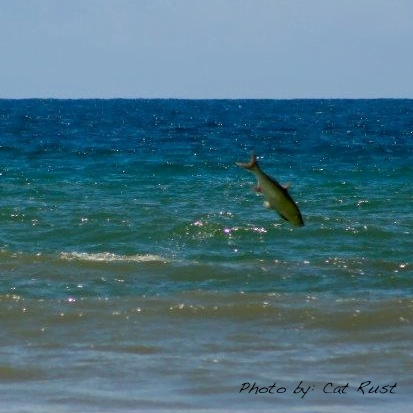
Photo credit: Cat Rust, Coquina Coast Outdoors
What does Coquina Coast Outdoors do?
Coquina Coast Outdoors publishes fishing reports based on real, on-the-water experience–not just call-ins from tackle shops. I prefer this type of report because I often feel that typical newspaper fishing reports are intended to get me to go the contributing tackle shop and buy this week’s lure or bait. My reports aim to highlight fishing opportunities and techniques that any angler can use.
The blog also covers news and feature stories about fishing, hunting, conservation and the outdoors lifestyle that are of interest to my readers.
What is your favorite part of the area and why?
My favorite parts of our area are the spartina and oyster flats between Palm Coast and St. Augustine. There are countless places here bordering the ICW channel to sling a noisy topwater or dainty soft plastic bait. The redfish are abundant, as are large flounder, trout and ladyfish. We also get the occasional snook and tarpon. I love being on the water by 6 am, pulling up to a glass-slick flat, and throwing my lure before the sun has broken the horizon.
Personally, I don’t think of the beach as my go-to destination for outdoor activities, like hunting or camping. Tell me about what Florida’s coast has to offer, besides fishing.
Fishing is the most popular sportsman’s activity in Florida, but we have excellent hunting and camping opportunities right along the coastline and in the interior of the state. Anastasia Island is a great place to start for hiking, camping and wildlife viewing. The park is located on the ocean in St. Augustine, covering the northern tip of Anastasia Island. Entrance by car or foot is only at the south end of the park, leaving the rest open to exploration. The further you go north, the further you get from civilization! Sand dunes, sea oat groves and estuarine shoreline are the primary habitats here.
Moses Creek Conservation Area is situated north of S.R. 206 on the west side of the Intracoastal Waterway. Moses Creek effectively bisects the park. Miles of hiking trails and a few primitive camp sites are here to explore. Moses creek is a beautiful, undeveloped feeder creek winding its way through high bluffs, oak hammocks, pine scrubs and spartina grass on its way to the Intracoastal.
I have never camped on the beach – the woods are my standard destination – but I really love the idea of beach camping. What would you say to encourage people to take their camping trips to the beach?
Ever fall asleep to the sound of the surf? That’s without a doubt the best reason to camp on the beach! The smell and taste of the salty sea breeze, chattering gulls and the opportunity to take a dip whenever you’d like make beach camping special. Here on the east coast, you’re also guaranteed an unbelievable sunrise over the ocean as a morning wake up call!
What makes beach camping different from camping in the woods or a park?
Beach camping always feels more primitive to me. Maybe it’s because shoes just get in the way. The only requisite attire is a swimsuit. Fish and crabs are always readily available in the surf for dinner. In our area, campers can round up a bucket of coquinas to make coquina soup! That’s an ancient staple of the aboriginal peoples and first settlers in this part of the world.
In the winter, beach campers can keep their eyes on the horizon for migrating right whales. In the summer, spinner sharks and tarpon take to the air in pursuit of baitfish.
What would someone look for in a great beach campsite?
A great beach campsite should be isolated. I like Anastasia Island State Park because it covers the entire tip of Anastasia Island. When you’re on the beach, you won’t here any traffic behind you. Campers can explore from the ocean shore to the Intracoastal shore unimpeded by development.
Beach camping is a great alternative in the summer because the bugs are not an issue as long as you have an east breeze, which is typical. Camping in the woods in Florida when it’s hot is a mosquito feast.
Tell me about your favorite spots in the area; what are a few destinations someone could go for a great outdoor beach experience before school starts back?
Driving A-1-A from Ponte Vedra to Flagler Beach is one of the best scenic experiences Florida offers. Every beach along this stretch is absolutely beautiful. Large coquina boulders near Marineland break up the standard flatness of Florida’s coastline. The brilliantly pink coquina sand of quaint Flagler Beach showcases the beauty of a coquina beach. Near St. Augustine and Matanzas inlet, the beaches are dominated by white sand, but coquina is still mixed in.
Besides the great beaches, some other great spots include the many parks we have in the area. Washington Oaks is a great place to start. It is a collection of botanical gardens on the Intracoastal just north of Palm Coast.
Marineland is always fun and educational for the family. They house 13 Atlantic bottlenose dolphins and a variety of marine fish. The park overlooks the ocean with an awesome view!
Downtown St. Augustine is a great place for families, couples and friends. The history, food and bars here are second-to-none.
For those with a boat or kayak, we have endless waterways to explore. The best place to put in a paddle craft is at S.R. 206. A field of oyster bars and Moses Creek hold all sorts of wildlife. Public boat ramps in St. Augustine, Butler Beach, Bing’s Landing and Flagler Beach provide perfect places to start a boating or fishing adventure.

